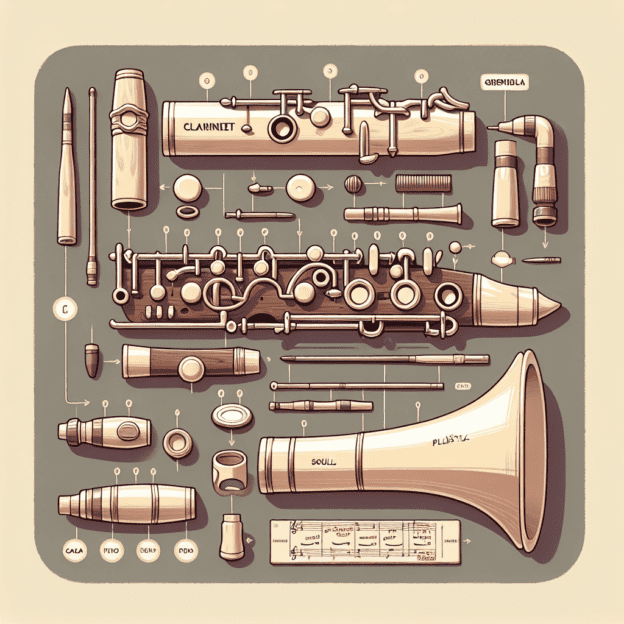The clarinet barrel is a key component of the instrument, affecting everything from tuning to tonal quality. It connects the mouthpiece to the upper joint of the clarinet, playing a crucial role in sound production and overall performance. In this post, we'll explore various facts about the clarinet barrel, its construction, and how it impacts your playing experience.
The Function of the Barrel
The barrel serves several important purposes:
- Length Adjustment: The barrel's length can affect tuning and intonation. A longer barrel typically lowers the pitch, while a shorter one raises it.
- Sound Quality: The barrel shapes the sound by influencing the resistance the player feels while blowing. This allows players to have more control over their tonal quality.
- Reliability: A properly fitted barrel ensures a secure connection between the mouthpiece and the clarinet, preventing air leaks and allowing for more consistent sound production.
Materials Used in Clarinet Barrels
Traditionally, barrels are crafted from wood, usually grenadilla or African blackwood, which are known for their rich tone quality. However, other materials are gaining popularity:
| Material | Characteristics | Best For |
|---|---|---|
| Wood (Grenadilla, African Blackwood) | Rich tone, traditional choice | Professional players, advanced students |
| Plastic | Durable, less sensitive to environmental changes | Beginners, student instruments |
| Resin | Durable with improved sound quality | Intermediate players, humid environments |
| Wood Alternatives (Maple, Cherry) | Distinct tonal qualities | Players exploring different sounds |
Barrel Length and Its Effects
Barrel lengths can vary between clarinets. Here are some key points to consider:
- Standard Length: The typical barrel length for the Bb clarinet is between 60mm to 65mm.
- Custom Lengths: Professional players often try out custom barrel lengths to find the best fit for their instruments and personal playing style.
- Tuning Adjustments: If a player often finds themselves out of tune, trying a different barrel length may help achieve the desired pitch.
Influence on Tone Quality
The barrel significantly impacts tone quality. It can affect the brightness or darkness of the sound, articulation clarity, and overall projection:
- Dark vs. Bright Sound: Barrels designed for a fuller, warmer sound often have a slightly wider diameter or a different bore compared to those designed for brightness.
- Responsiveness: Players seeking agility might prefer a barrel that offers less resistance, allowing for quicker articulation.
- Projection: For ensemble playing, a barrel that helps with strong projection is important for ensuring clarity in larger groups.
Barrel Maintenance
Like all parts of a clarinet, the barrel needs regular maintenance to ensure it performs well:
- Cleaning: Regularly clean the inside of the barrel using a soft cloth and avoid using any harsh detergents.
- Inspections: Look for cracks or damage that could affect tuning and sound quality. Even small issues can significantly impact performance.
- Storage: When not playing, store the clarinet in a suitable case to protect the barrel from humidity changes that can cause warping.
Choosing the Right Barrel
Finding the perfect barrel that fits your preferences can be challenging. Here are a few helpful tips:
- Test Different Options: Try various barrel lengths and materials to find which combination suits your playing style and sound preferences.
- Consult with Professionals: Talking with experienced players or teachers can give you insight into which barrels work best for different music styles.
- Consider the Brand: Martin Freres offers a range of well-regarded barrels. Looking into other players' experiences can help you make informed decisions.
Understanding how the clarinet barrel works and affects your playing can improve any musician's experience and performance. With the right barrel, players can achieve their desired sound and deepen their appreciation for the clarinet.







